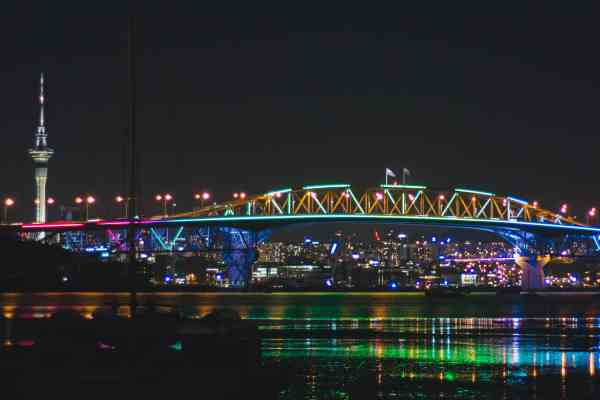Published on the 06/07/2018 | Written by Heather Wright

City maps out a smart future where your every move is tracked…
Cities around the world are grappling with population growth and planning conundrums, and data analytics are being touted as the ‘smart’ way to improve longer term planning decisions.
Auckland Council has announced it’s upping its smart city play with a new system to analyse massive data sets and improve decision making around infrastructure.
The project, coined the ‘Smart Growth Portal’, combines existing Council geospatial data with that from public sources and central government in a way that has not been done before, Auckland Council says.
The council partnered with local integrator The Instillery to deliver a solution on Amazon’s AWS Cloud to handle the massive data volumes needed to feed the portal.
The portal connects data from disparate data sets across the council’s business, creating a 2D and 3D connected, interactive view of Auckland, and is capable of processing the hundreds of terabytes of data in days, instead of the previous months required.
Haydn Read, Auckland Council head of infrastructure programmes for the development programme office, says connecting the massive data sets from across the entire council, including Auckland Transport and Watercare, will provide a clearer view of the city’s development and infrastructure needs. The council manages around $40 billion of assets.
Designed by Auckland Council with help from The Instillery the solution is delivered on Amazon Web Services’ cloud platform and encompasses a range of AWS services. The offering will enable the council to do analysis it was previously unable to do, including dynamic analysis of traffic and pedestrian movements.
Read says that analysis will include things like the effect of population growth on assets over their life and predicted congestion on roads.
A 2017 business case from Auckland Transport points to the portal as part of improving measurement of pedestrian counts and cycle traffic monitoring. The project as proposed would install digital monitoring of non-vehicular traffic using cameras and an IoT sensor network. The network platform, known as “Kite”, has been installed by Wellington and Christchurch councils.
“By connecting the natural, built and social environments into a realistic digital version of Auckland, overlaying resilience datasets and providing the ability to develop scenarios, we can provide deeper analysis to help inform and solve the investment discussions and decisions in areas such as housing and roads,” says Read.
The council is also looking at the potential for the portal to expand to accommodate other data systems, scaling to adopt central and local government agencies’ data. MBIE and Housing New Zealand are among a number of agencies the council says have already indicated interest in leveraging the portal.
“By mapping the roads for instance, with public transport routes and overlaying that data with social indicators such as population, health, unemployment and income, we can start to transform the data into highly valuable information to see what those communities might look like in the future and where we should prioritise investment,” he says.
The Kite system, provided by NEC, would improve the monitoring of pedestrian movements in the city centre. Currently, AT measures vehicle movements using data collected from traffic signal detectors and public transport usage is measured using HOP card transactions. Pedestrian counts however are done by a human looking at a camera two hours a day for two days, four times a year. The new system would monitor ‘live’ counts. The pedestrian monitoring was to be interfaced into the Smart Growth Portal, and the project also contemplates merging this with telco data to provide detailed insights into people movements.
In October 2017, the council announced a $625,000 contract had been awarded to NEC New Zealand for visualisation code and web portal development work related to the Smart Growth Portal, so indications are the project is going ahead as planned.
Amazon has recently fended off criticism from civil libertarians on the use of facial recognition tools, and NZ Police recently announced they are contemplating an upgrade to their CCTV camera network to introduce facial recognition capabilities.
Facial recognition was not mentioned in this announcement, but rest assured, big brother is watching.



























